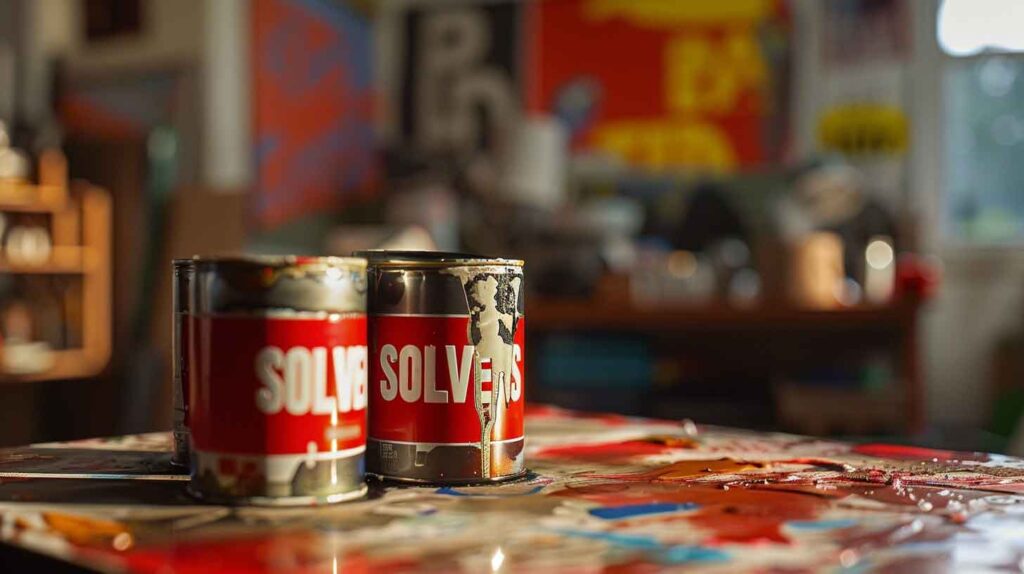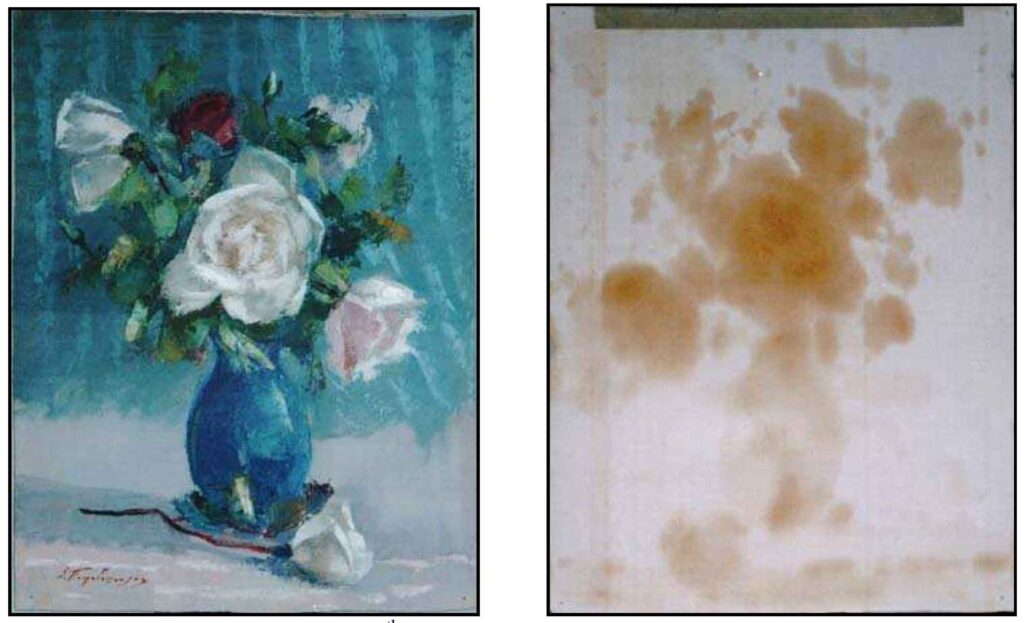
Dangers of Excessively Thinning Oil Paint
It is impossible to preserve oil paint films that have been extremely thinned out through the use of solvents, such as turpentine or mineral spirits, without a severe change in their appearance. Excessively thinning oil paint creates films that are very much like pastel drawings on paper. There is hardly anything more than the rough tooth of the canvas acting as a binder for pigment. Very frequently, the mere passing of a dry cotton swab (as is the practice in cleaning paintings) over the surface of this type of paint film will result in the removal of some pigment. This condition exists because there is hardly any oil binder present. Once such a paint film becomes soiled with grime, it is almost impossible to remove the grime without removing some pigment.
If such a paint film is protected with varnish, the varnish will become part of the paint film. When it comes time to remove the varnish, it will be impossible to avoid removing quantities of the paint and the varnish.
While diluting oil paint, if the artist uses a solution of highly diluted bodied (stand) oil in turpentine or mineral spirits instead of turpentine or mineral spirits alone, the chance of permanence in such thinned-out paint films would be good.
Based on an excerpt from “Is Your Contemporary Painting More Temporary Than You Think?” by Louis Pomerantz.







Responses